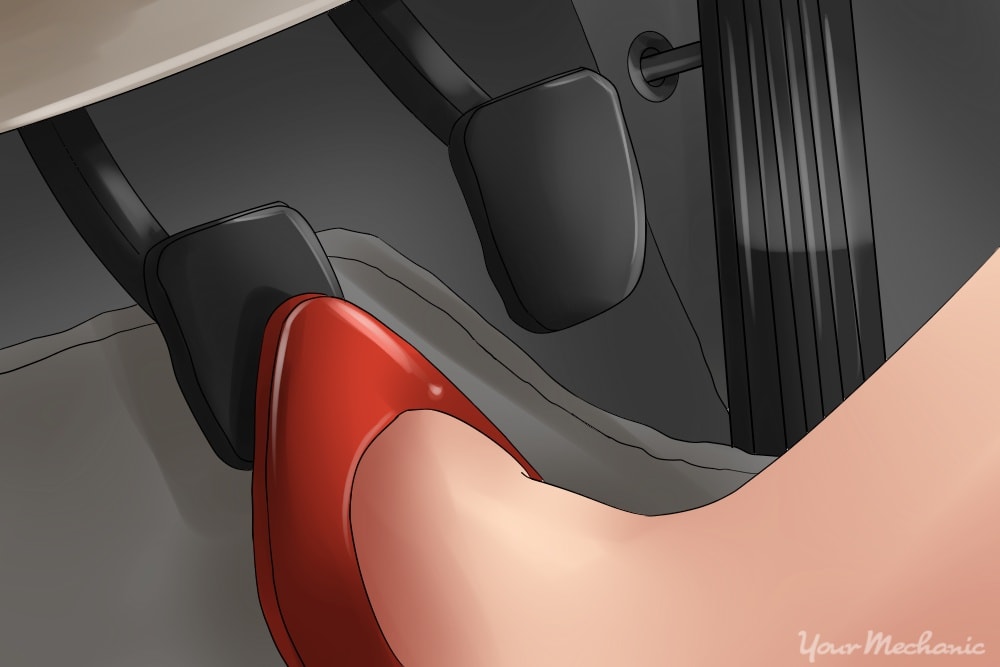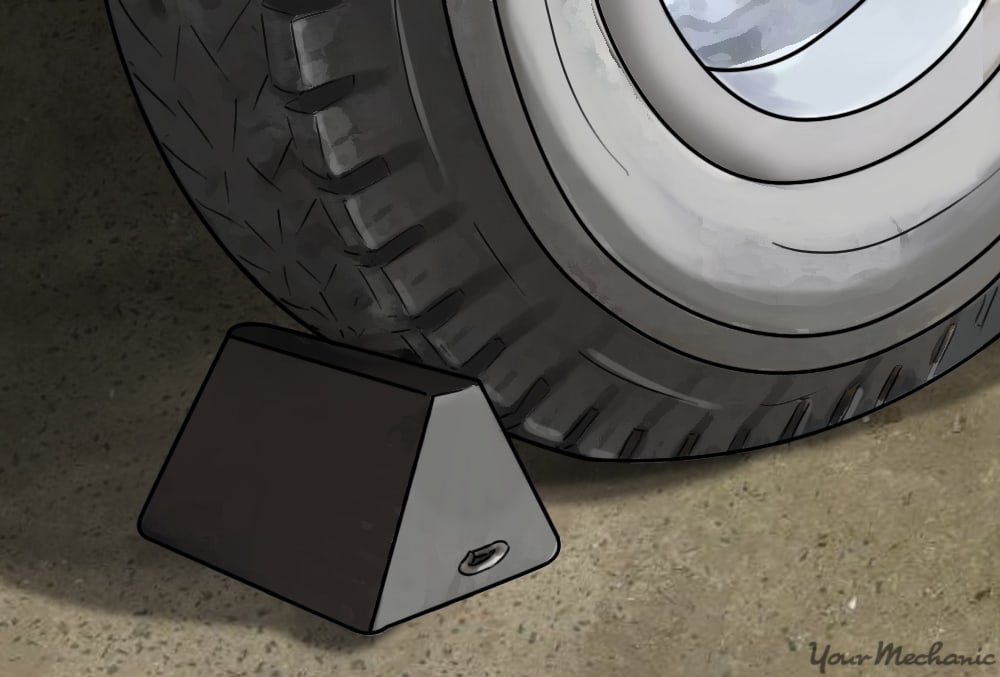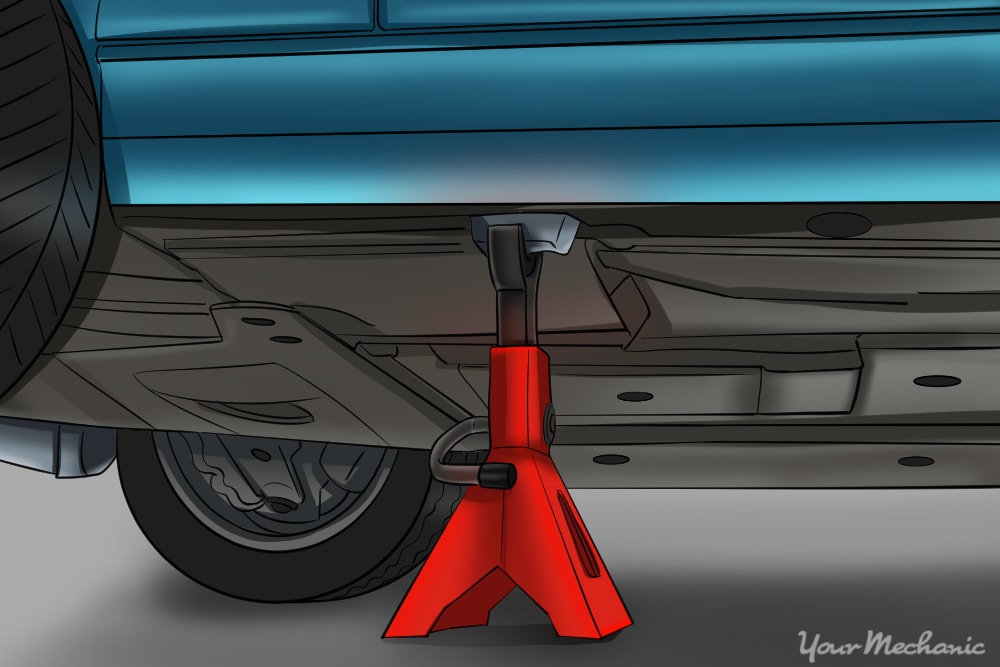

The purpose of a clutch in a car is to transmit the torque, deliver the power from the engine to the transmission, reduce drive vibration, and to protect the drivetrain. The clutch is located between the engine and the transmission of a vehicle.
When a car is moving under power, the clutch is engaged. A pressure plate bolted to the flywheel exerts constant force, by means of a diaphragm spring, on the driven plate. When the clutch is disengaged (pedal depressed), an arm pushes a release bearing against the center of the diaphragm spring which releases the clamping pressure.
When the clutch is not fully disengaging, the clutch is constantly slipping and burning up the friction materials. Plus, the clutch release bearing will constantly have pressure on it along with rotational twists causing excessive heat build up. Eventually the friction material will burn off and the clutch release bearing will seize and collapse.
There are four areas to check for a clutch that’s not fully disengaging
- Stretched or broken clutch cable
- A hydraulic leak within the clutch hydraulic system
- Linkage is out of adjustment
- Aftermarket parts that are incompatible
Part 1 of 5: Diagnosing a stretched or broken clutch cable
Preparing the vehicle to check the clutch cable
Materials Needed
- Creeper
- Flashlight
- Jack
- Jack stands
- SAE/metric socket set
- SAE/metric wrench set
- Safety glasses
- Wheel chocks
Step 1: Park your vehicle on a flat, hard surface. Make sure that the transmission is in park (for automatics) or in 1st gear (for manuals).
Step 2: Place wheel chocks around the rear tires that will be remaining on the ground. Engage the parking brake to the lock the rear tires from moving.
Step 3: Raise the vehicle. Using a floor jack that is recommended for the weight of the vehicle, lift under the vehicle at its specified jacking points until the wheels are completely off the ground.
Step 4: Place the jack stands. The jack stands should go under the jacking point locations. Then lower the vehicle onto the jack stands. For most modern cars, the jacking points for jack stands will be on the pinch weld just under the doors along the bottom of the car.
Checking the condition of the clutch cable
Step 1: Put on your safety glasses, grab your flashlight, and grab your creeper. Go under the vehicle and check the condition of the clutch cable. Look for any looseness to the cable and if the cable is broken or stretched.
Step 2: Check the cable support brackets for any looseness. Make sure that the cable is secure and that the cable housing does not move.
Step 3: Look at the cable where it is attached to the clutch pedal. Make sure that it is not frayed or stretched.
Lowering the vehicle after performing the diagnosis
Step 1: Collect all tools and your creeper and place them out of the way.
Step 2: Raise the vehicle. Using a floor jack that is recommended for the weight of the vehicle, lift under the vehicle at its specified jacking points until the wheels are completely off the ground.
Step 3: Remove the jack stands and keep them far away from the vehicle.
Step 4: Lower the vehicle to where all four wheels are on the ground. Pull out the jack and put it aside.
Step 5: Remove the wheel chocks from the rear wheels and put the aside.
If the problem needs attention now, repair the stretched or broken clutch cable.
Part 2 of 5: Diagnosing a hydraulic leak within the clutch hydraulic system
Preparing the vehicle to check the clutch hydraulic system for leaks
Materials Needed
- Creeper
- Flashlight
- Jack
- Jack stands
- Safety glasses
- Wheel chocks
Step 1: Park your vehicle on a flat, hard surface. Make sure that the transmission is in park (for automatics) or in first gear (for manuals).
Step 2: Place wheel chocks around the rear tires that will be remaining on the ground. Engage the parking brake to the lock the rear tires from moving.
Step 3: Raise the vehicle. Using a floor jack that is recommended for the weight of the vehicle, lift under the vehicle at its specified jacking points until the wheels are completely off the ground.
Step 4: Place the jack stands. The jack stands should go under the jacking point locations.
Then lower the vehicle onto the jack stands. For most modern cars, the jacking points for jack stands will be on the pinch weld just under the doors along the bottom of the car.
Checking the condition of the clutch hydraulic system
Step 1: Put on your safety glasses and grab your flashlight. Open the hood to the engine compartment and locate the clutch master cylinder.
Check the condition of the clutch master cylinder and see if there is any leaking fluid. Look at the back of the clutch master cylinder for any oil present.
Also, look at the hydraulic line and check for any leaking oil. Check the line to and make sure that it is tight.
Step 2: Grab your creeper and go under the vehicle. Check the slave cylinder condition for any leaks. Pull back on the rubber boots to see if the seal on the housing has failed.
Make sure that the bleeder screw is tight. Check the line and make sure that it is tight.
Lowering the vehicle after performing the diagnosis
Step 1: Collect all tools and your creeper and place them out of the way.
Step 2: Raise the vehicle. Using a floor jack that is recommended for the weight of the vehicle, lift under the vehicle at its specified jacking points until the wheels are completely off the ground.
Step 3: Remove the jack stands and keep them far away from the vehicle.
Step 4: Lower the vehicle to where all four wheels are on the ground. Pull out the jack and put it aside.
Step 5: Remove the wheel chocks from the rear wheels and put the aside.
Have a certified mechanic check to see if there's a hydraulic leak within the clutch hydraulic system.
Part 3 of 5: Diagnosing a linkage that is out of adjustment
Preparing the vehicle to check the adjustment settings on the clutch linkage
Materials Needed
- Creeper
- Flashlight
- Jack
- Jack stands
- Needle nose pliers
- SAE/metric wrench set
- Safety glasses
- Wheel chocks
Step 1: Park your vehicle on a flat, hard surface. Make sure that the transmission is in park (for automatics) or in first gear (for manuals).
Step 2: Place wheel chocks around the rear tires that will be remaining on the ground. Engage the parking brake to the lock the rear tires from moving.
Step 3: Raise the vehicle. Using a floor jack that is recommended for the weight of the vehicle, lift under the vehicle at its specified jacking points until the wheels are completely off the ground.
Step 4: Place the jack stands. The jack stands should go under the jacking point locations. Then lower the vehicle onto the jack stands.
For most modern cars, the jacking points for jack stands will be on the pinch weld just under the doors along the bottom of the car.
Checking the adjustment settings on the clutch linkage
Step 1: Put on your safety glasses, grab your flashlight, and grab your creeper. Go under the vehicle and check the condition of the clutch linkage.
Look to see if the clutch linkage is loose or out of adjustment. Check the connections to the clutch fork to make sure that the clutch linkage is tight.
Step 2: Check the clutch linkage at the clutch pedal. Make sure that the pin and cotter pin are in place.
Check to see if the adjusting nut is tight.
Step 3: Check the return spring on the clutch pedal. Ensure that the return spring is functional and working properly.
Lowering the vehicle after performing the diagnosis
Step 1: Collect all tools and your creeper and place them out of the way.
Step 2: Raise the vehicle. Using a floor jack that is recommended for the weight of the vehicle, lift under the vehicle at its specified jacking points until the wheels are completely off the ground.
Step 3: Remove the jack stands and keep them far away from the vehicle.
Step 4: Lower the vehicle to where all four wheels are on the ground. Pull out the jack and put it aside.
Step 5: Remove the wheel chocks from the rear wheels and put the aside.
If the linkage is out of adjustment, have it looked at by a professional technician.
Part 4 of 5: Diagnosing aftermarket parts that were installed and are incompatible
-
Note: Some aftermarket parts are similar to the manufacture, however, there may be a different line up with the bolt patterns or the parts may operate differently. If your aftermarket parts are incompatible it can affect the functioning of your clutch.
Preparing the vehicle to check the incompatible aftermarket parts
Materials Needed
- Creeper
- Flashlight
- Jack
- Jack stands
- Needle nose pliers
- SAE/metric wrench set
- Safety glasses
- Wheel chocks
Step 1: Park your vehicle on a flat, hard surface. Make sure that the transmission is in park (for automatics) or in first gear (for manuals).
Step 2: Place wheel chocks around the rear tires that will be remaining on the ground. Engage the parking brake to the lock the rear tires from moving.
Step 3: Raise the vehicle. Using a floor jack that is recommended for the weight of the vehicle, lift under the vehicle at its specified jacking points until the wheels are completely off the ground.
Step 4: Place the jack stands. The jack stands should go under the jacking point locations. Then lower the vehicle onto the jack stands.
For most modern cars, the jacking points for jack stands will be on the pinch weld just under the doors along the bottom of the car.
Checking the aftermarket parts that are incompatible
Step 1: Look over the entire clutch system. Locate any unusual parts that don’t look like factory installed. Observe the location and nature of the part.
Step 2: Check the parts for any damage or unusual wear. Operate the clutch with the engine off and see if the part or parts are not working correctly.
-
Note: If the clutch pedal was replaced with an aftermarket pedal, you will need to check the clutch pedal to floor distance.
It is common for someone to have a custom clutch pedal installed and not have the proper clearance making a symptom of not fully disengaging clutch for the pedal hitting the floor board.
Lowering the vehicle after performing the diagnosis
Step 1: Collect all tools and your creeper and place them out of the way.
Step 2: Raise the vehicle. Using a floor jack that is recommended for the weight of the vehicle, lift under the vehicle at its specified jacking points until the wheels are completely off the ground.
Step 3: Remove the jack stands and keep them far away from the vehicle.
Step 4: Lower the vehicle to where all four wheels are on the ground. Pull out the jack and put it aside.
Step 5: Remove the wheel chocks from the rear wheels and put the aside.
If you need additional help in diagnosing the issue, then you should seek out help from a certified mechanic. Fixing a clutch that is not fully disengaging can help improve the drivability of the vehicle and prevent any damage to the clutch or transmission.





